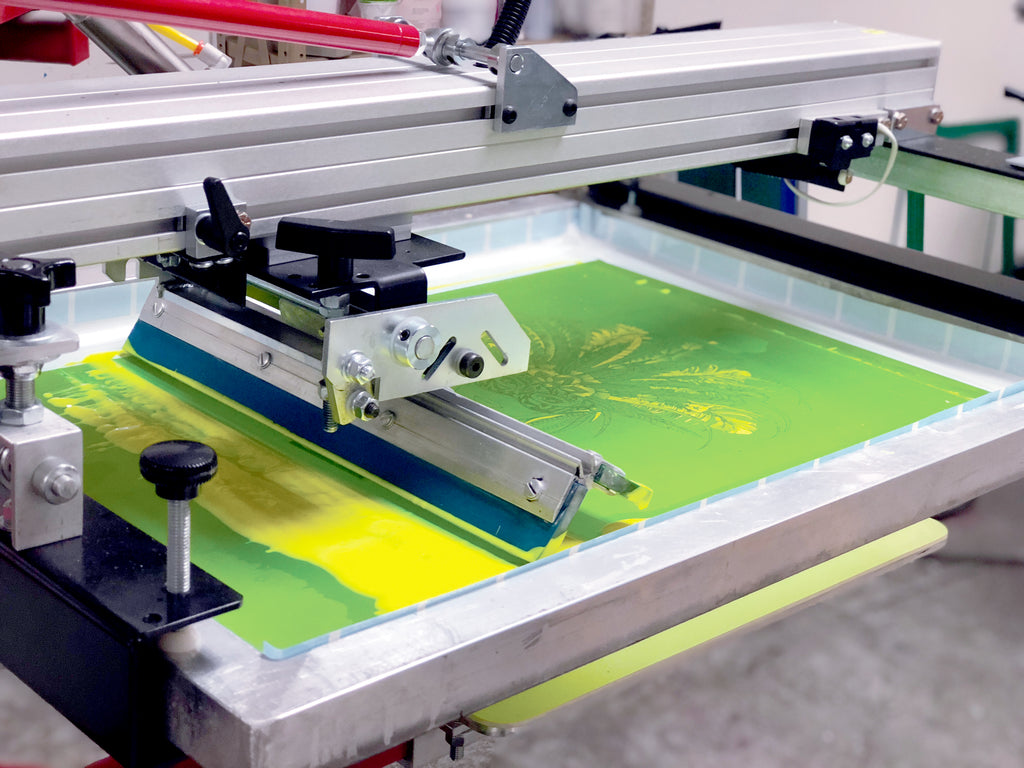
Off contact is the distance between the bottom of the screen mesh and the top of the garment being printed. In general you want to use as little as off contact as you need. Off contact distance typically varies from 1/32" to about 1/4" inch depending on the type of garment you are printing on and the type of ink you are using. Using more off contact also increases the amount of ink deposited on the t-shirt. Decreasing and using a smaller off contact distance reduces the amount of ink deposited on the shirt. But off contact also helps control the crispness of our prints- while also reducing ink build-up on the backs of screens when printing wet on wet.
If your screen mesh is tight you can use less off contact. But the more "loose" your mesh gets- the more off contact your screen will require. The purpose of off contact is release the ink out of the mesh and onto the the garment after the squeegee passes. This is accomplished by the screen "snapping" off the garment and releasing the ink on the garment. The squeegee moves over the screen, pushing the ink as it goes, and the screen drops down and touches the garment. As the squeegee moves the screen snaps off the shirt, releasing a deposit of ink on the shirt.
Discharge and water base ink usually use 1/32" of an inch for off contact- equal to the thickness of a dime. Off contact for printing plastisol ink is usually 1/6" of an inch- equal to the thickness of a quarter. Use a little more than a quarter (two quarters) for printing hoodies and sweatshirts.




Leave a comment